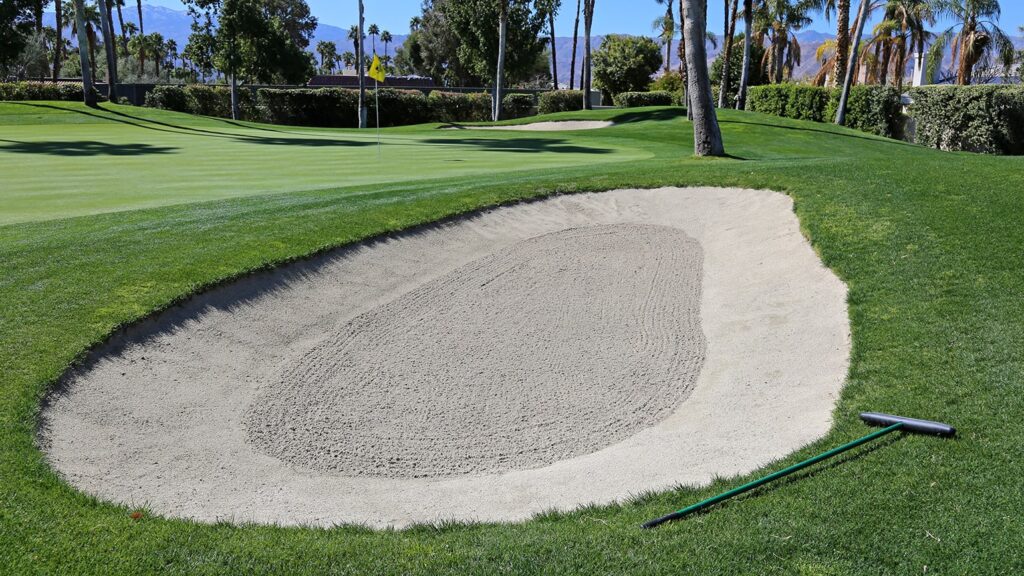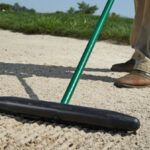How to Rake a Bunker
Superintendents work hard to provide good bunker playability and presentation, but the maintenance team can only do so much. Once they have completed daily bunker maintenance it’s in our hands as golfers to keep bunkers looking and playing great. Doing a good job raking bunkers is an easy way to maintain good playing conditions for everyone and it’s a great way to demonstrate care for the course.

The ultimate goal of raking a bunker is simple – use whatever rake is provided to produce as smooth of a surface as possible. This includes raking your footprints and whatever disruption was caused by the golf shot. In addition to this basic goal, there are a few other things to keep in mind while raking that can help maintain the bunker and surrounding grass areas:
- Always enter and exit on the low side of a bunker – do not jump down or climb up steep faces, even if it might be a faster. Climbing steep grass faces can cause serious turf damage in an area where it is already hard to grow grass. Walking up and down sand faces can cause the sand to shift and collapse, which creates playability issues and a time-consuming repair job for the maintenance team.
- Some facilities use the “Aussie method” of raking bunkers, where sand faces are kept smooth while the floor of the bunker is raked normally. If you find yourself in a bunker that has been prepared this way, flip the rake over and use the smooth side of the rake head – with the teeth facing up – to smooth the perimeter of the bunker where you enter and exit after raking your way out of the floor.
- When raking near the edge of a bunker, do not pull sand out of the bunker into the grass. Sand can accumulate in the grass around bunkers over time, causing the grass to dry out. Raking sand over the bunker edge also makes it difficult to define the edge, which can be problematic from a rules perspective.
- As you are exiting the bunker, use your club to knock any sand off the bottom of your shoes. This is especially important following greenside bunker shots. Walking across the green after hitting a bunker shot can leave sandy footprints that cause playability issues for other golfers and may even damage expensive maintenance equipment.
- The final step is replacing your rake in the location preferred by the course. Courses opt to set things up differently, so you should make yourself aware of the desired location before playing. If you’re not sure what to do, place your rake outside the bunker in a location where it is easily accessible by others and not likely to have a negative impact on play.

As you play different courses, you will likely find different rakes being used. Courses choose different rakes for a variety of reasons including price, the type of sand they have, the type of playing surface they want, and the appearance of the rake itself. The type of rake shouldn’t influence what we do after hitting a bunker shot – enter from the low side, smooth the surface as uniformly as possible, exit from the low side, knock the sand off your shoes and then go make that par putt!
Looking for more information on this topic? Click here
